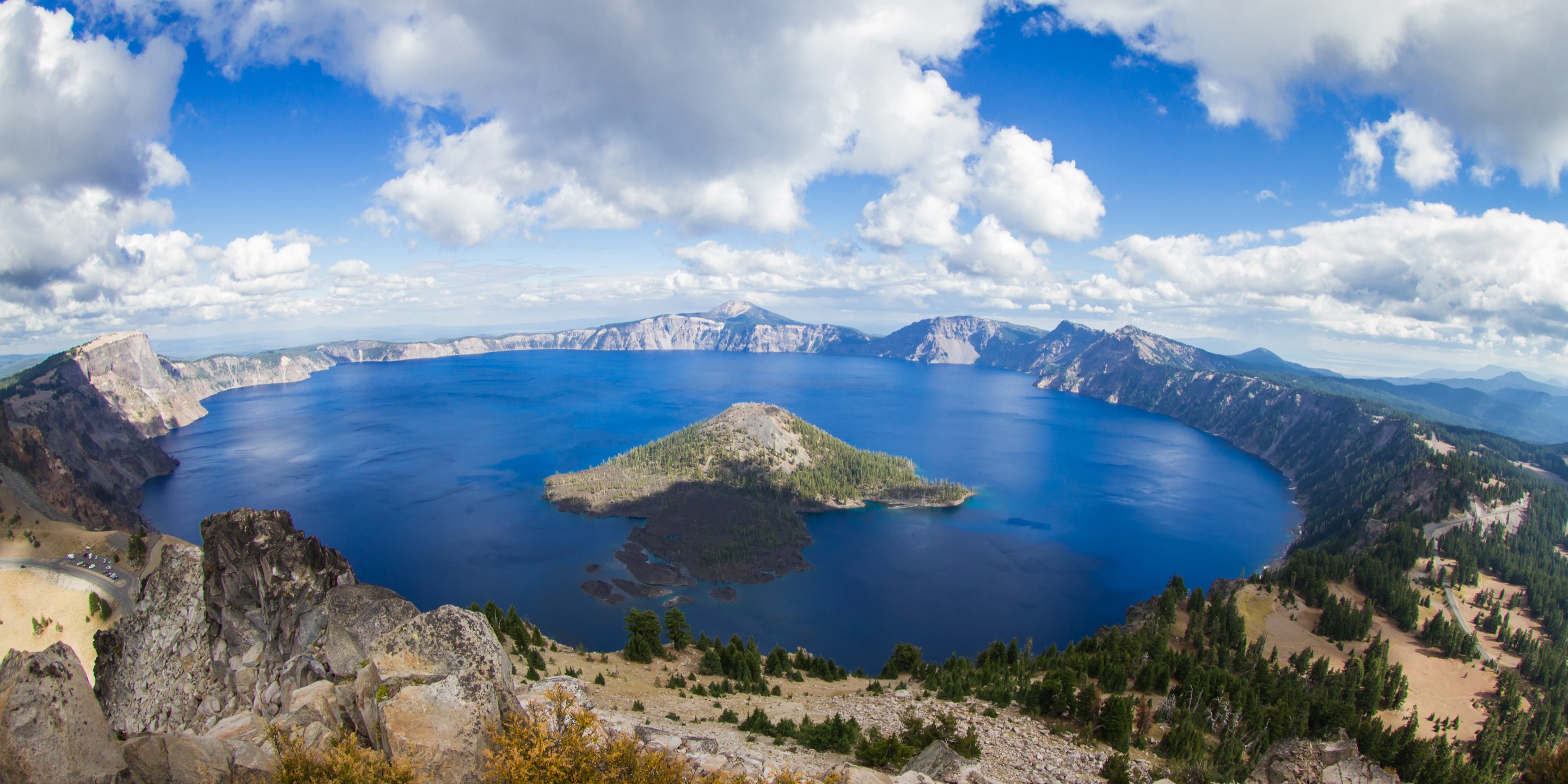
Echoes from the Deep: Crater Lake and the Enduring Legends of America
America, a land forged in revolution and innovation, is equally defined by its whispers and wonders. From the towering peaks of the Rockies to the sun-drenched deserts of the Southwest, legends cling like morning mist, weaving a vibrant tapestry of cultural identity, fear, and aspiration. These are the stories of larger-than-life figures, inexplicable phenomena, and profound natural spectacles that have shaped the American psyche. Yet, few places encapsulate this rich blend of myth and mystery quite like Oregon’s Crater Lake, a pristine sapphire jewel cradled within a volcanic caldera, whose depths hold not just water, but the echoes of ancient tales.
Legends in America are as diverse as its landscapes. They manifest as the towering feats of folk heroes like Paul Bunyan, whose mighty axe carved rivers and forests; the spectral figures haunting forgotten battlefields and ghost towns; or the elusive cryptids, from Bigfoot stomping through the Pacific Northwest to the Jersey Devil terrorizing the Pine Barrens. These narratives serve multiple purposes: they explain the inexplicable, transmit cultural values, provide entertainment, and often, offer solace or warning. They are, in essence, the soul of a nation, continually retold and reinterpreted, reflecting the evolving hopes and anxieties of its people.
But to truly understand the profound connection between land and legend, one must journey to Crater Lake. Located in the Cascade Mountains of southern Oregon, this national park is a geological marvel. Formed nearly 7,700 years ago by the catastrophic eruption and subsequent collapse of Mount Mazama, it is the deepest lake in the United States, plunging to an astonishing 1,943 feet (592 meters). Its waters are renowned for their intense blue hue and exceptional clarity, a result of its unique formation: it’s fed entirely by precipitation and snowmelt, with no incoming rivers or streams to carry sediment. The sheer scale and breathtaking beauty of Crater Lake command reverence, making it a natural canvas for myth.

Long before European settlers gazed upon its mesmerizing surface, the Klamath people, Indigenous inhabitants of the region for millennia, held Crater Lake – which they called "Giiwas" or "Deep Blue Lake" – as a sacred site. Their legends are not mere fanciful tales; they are deeply intertwined with the very landscape, offering explanations for its dramatic formation and serving as moral guideposts. The most prominent among these is the epic saga of Llao and Skell, a cosmic battle that shaped not only the physical features of the land but also the spiritual understanding of its people.
According to Klamath lore, Llao was the spirit of the underworld, a powerful and malevolent deity whose domain was the majestic Mount Mazama. He was often depicted as a monstrous crayfish, with formidable claws and dark intentions, possessing the power to bring famine and plague. Skell, on the spirit of the sky, was benevolent, representing light, goodness, and life. The conflict between these two forces was ignited by Llao’s jealousy and his desire to expand his dominion over the human world.
The legend describes a cataclysmic war that raged between Llao and Skell. Llao, from his fiery lair within Mount Mazama, hurled fire and ash at Skell, who retaliated by casting down lightning and thunder. The earth trembled, mountains shook, and the sky turned black as the two titans clashed. Humans, caught in the terrifying crossfire, were instructed by Skell’s holy man to seek refuge and pray, turning their backs to the mountain, lest they gaze upon the wrath of Llao. The battle reached its crescendo when Skell, with a final, devastating blow, defeated Llao, banishing him back into the underworld. Skell then caused the mountain to collapse upon Llao’s defeated form, sealing him beneath the earth. The massive depression left by the collapse filled with water over centuries, creating the deep, blue lake we know today – a permanent monument to the epic struggle and a prison for the vanquished Llao.
For the Klamath people, this legend is far more than an origin story. It is a profound spiritual narrative that explains the power of nature, the consequences of imbalance, and the perpetual struggle between good and evil. The lake became a place of immense spiritual power, often avoided due to the lingering presence of Llao, but also revered as a site for vision quests and sacred rituals by shamans. To this day, the Klamath maintain a deep spiritual connection to Crater Lake, viewing it as a living entity imbued with the history and spirits of their ancestors. As Dr. Herman J. Viola, Curator Emeritus at the Smithsonian’s National Museum of the American Indian, once noted, "Native American myths are not merely stories; they are history, philosophy, and spiritual guidance, all woven into a narrative fabric that defines a people and their relationship to their world."
Beyond the Klamath’s ancient narratives, Crater Lake also harbors a more peculiar, almost whimsical, modern legend: "The Old Man of the Lake." This is not a spirit or a monster, but a very real, remarkably preserved hemlock log, roughly 30 feet (9 meters) long, that has been observed floating vertically in the lake for over a century. Its upper end, bleached white by the sun, protrudes about four feet above the surface, while its submerged base is weighted by roots, keeping it upright. The Old Man drifts aimlessly across the lake, moved by winds and currents, often traveling several miles in a single day. Its seemingly perpetual motion and resilience against decay have made it a minor legend in its own right, a silent, ancient sentinel of the lake’s mysteries. Scientists have studied it, confirming its age and the remarkable preservation properties of the lake’s cold, deep, and stable waters, yet its solitary, enduring presence adds another layer of quiet wonder to Crater Lake.
The allure of Crater Lake, like many legendary sites, lies in the potent intersection of scientific fact and human imagination. Geologists meticulously chart its volcanic origins, limnologists study its unique ecosystem, and hydrologists monitor its pristine waters. Yet, no amount of scientific data can fully diminish the power of the Llao and Skell legend. In fact, science often inadvertently reinforces the core truths embedded in myth. The eruption of Mount Mazama was indeed a cataclysmic event, a spectacle of fire and destruction that would have profoundly impacted anyone witnessing it. It’s entirely plausible, even likely, that the oral traditions of the Klamath people are a cultural memory, passed down through generations, of this very real geological phenomenon. Legends, at their heart, are often humanity’s first attempts at science, offering explanations for a world that frequently defies easy understanding.
Crater Lake, therefore, stands as a microcosm of America’s broader relationship with its legends. From the mysterious lights of Marfa, Texas, to the fabled lost gold of the Dutchman Mine in Arizona, from the haunting tales of the Salem Witch Trials to the persistent search for Bigfoot in the dense forests, American legends endure because they speak to fundamental human needs. They offer a sense of wonder in an increasingly rationalized world, provide frameworks for understanding the unknown, and connect us to our past, whether that past is ancient and spiritual, or more recent and historical. They allow us to grapple with our fears, celebrate our heroes, and contemplate the vastness of nature and the universe.
In an age dominated by information and technology, the whispers of legend might seem quaint, yet their power remains undiminished. They remind us that there are still mysteries, still forces beyond our complete comprehension, and still profound stories waiting to be told and retold. Crater Lake, with its sapphire depths and ancient tales of gods and monsters, its enduring "Old Man," and its profound spiritual resonance for the Klamath people, stands as a potent symbol of this truth. It is a place where the grandeur of nature seamlessly blends with the richness of human imagination, proving that America, in all its modernity, remains a land where legends continue to echo from the deep, shaping our understanding of ourselves and the remarkable land we inhabit.



